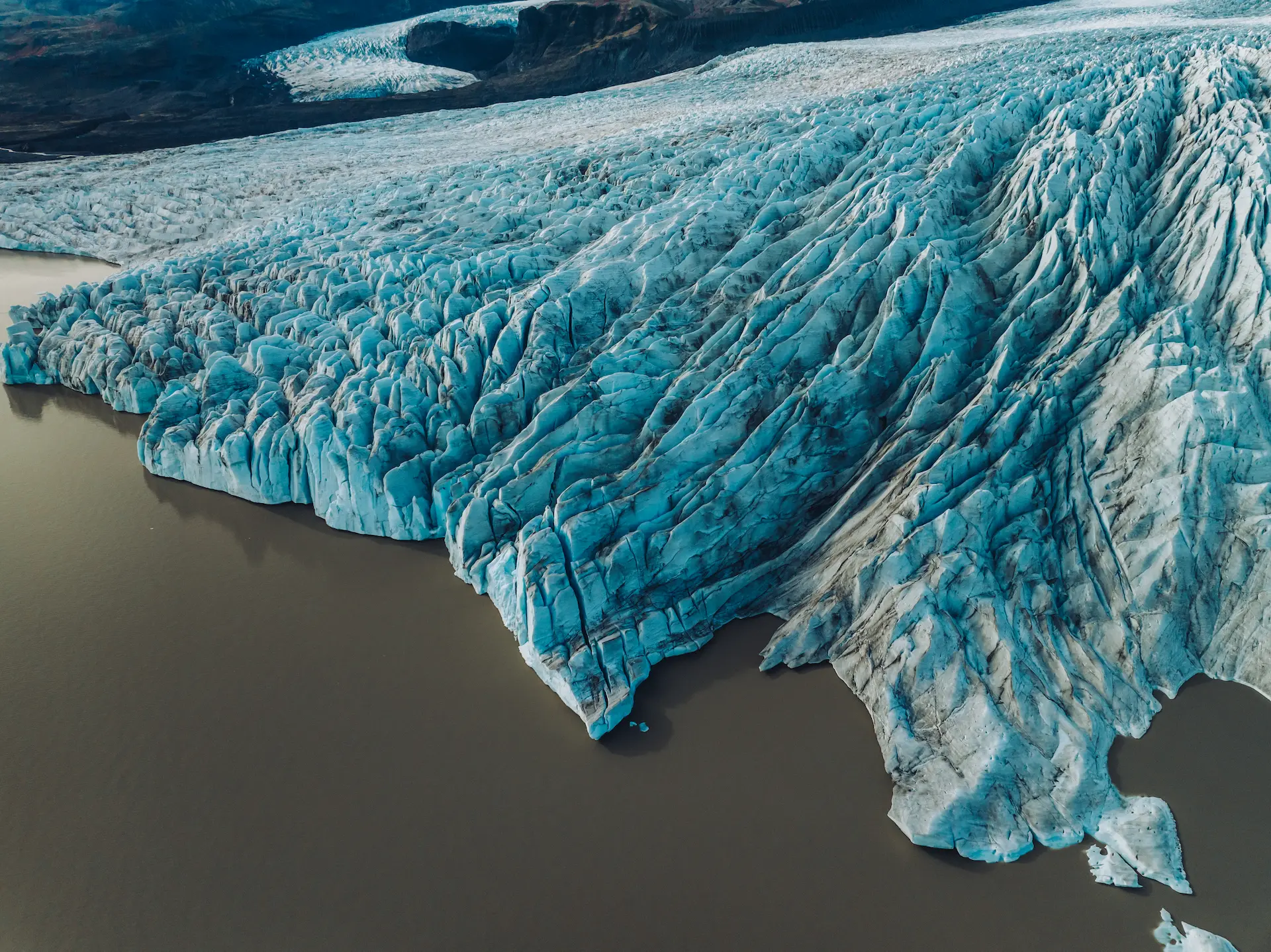Fjallsárlón is a pretty lagoon in the south east of Iceland. Like its larger neighbour Jökulsárlón, it’s formed by glacial processes, but the two places have a few differences that makes each unique. Let’s take a look at Fjallsárlón and find out why it is worth a visit.
The Picturesque Setting of Fjallsárlón
Both glacial lagoons form part of Vatnajökull National Park and sit below glaciers.
- Jökulsárlón lies in the shadow of Breiðamerkurjökull.
- Fjallsárlón is backed by Fjallsjökull, an outlet glacier of Öræfajökull, around two kilometres wide and stretching a similar distance down the valley.
Another striking feature is Miðaftanstindur, a triangular-shaped mountain peak that forms part of the backdrop. Fjallsárlón is Iceland’s fourth deepest lake, and because it’s smaller than Jökulsárlón, you see more clearly how the glaciers, mountains, and water work together to create a breathtaking view.
How Did Fjallsárlón Form?
The Fjallsjökull glacier has been retreating for some time.
- The glacier likely reached its maximum size in the 1870s.
- Earlier, as it advanced, it carved a large hollow in the valley.
- The lagoon is filled by:
- Meltwater from Fjallsjökull and Hrútárjökull
- The Breiðá river, which feeds Breiðárlón before flowing into Fjallsárlón
- Meltwater from Fjallsjökull and Hrútárjökull
Today, icebergs calve from Fjallsjökull, crashing or sliding into the lagoon. These vary in:
- Size – from small chunks to massive blocks
- Shape – jagged or smooth
- Colour – opaque with grey and black streaks, or vibrant shades of blue
Why Visit Fjallsárlón?
1. Boat Trips
- Join a group tour in a Zodiac boat.
- Get close to the snout of the glacier.
- Learn from your guide about the processes that shaped the lagoon.
2. Glacier Hikes
- Explore Fjallsjökull on foot with a guided glacier hike.
- Typical hikes cover 5–7 km and aren’t too steep.
- Includes equipment (crampons, helmet, harness) and a full safety briefing.
- Witness crevasses, ridges, and other fascinating ice formations.
3. Northern Lights
- Fjallsárlón is an excellent dark-sky location with minimal light pollution.
- Best chances are during solar maximum years.
- Check forecasts for the Kp index and cloud cover before heading out.
Best Time of Year to Visit
- Year-round access: Fjallsárlón is a natural landscape and never closes.
- Boat trips: April–November (lagoon freezes in winter).
- Glacier hikes: May–October.
- Northern Lights: Late August–mid-April (best near the equinox in September and March).
Wildlife Around Fjallsárlón
While glaciers are harsh environments, you may spot:
- Arctic foxes (rare but possible in this region).
- Reindeer herds roaming East Iceland.
- Harbour seals swimming or resting on icebergs.
- Birdlife, such as:
- Great skuas (protective of their nests)
- Barnacle geese, which nest in the area
- Great skuas (protective of their nests)
How to Reach Fjallsárlón
- Located close to Iceland’s Ring Road (Route 1).
- About a 5-hour drive from Reykjavík or Keflavík Airport.
- Possible as a day trip, but better enjoyed with overnight stays along the way.
Where to Stay:
- Hotel Jökulsárlón is only a 20-minute drive east of the lagoon.
- Convenient if you’d like to return for a second visit, perhaps to see the Northern Lights after dinner.
Why not book your next stay with us? https://hoteljokulsarlon.is/

